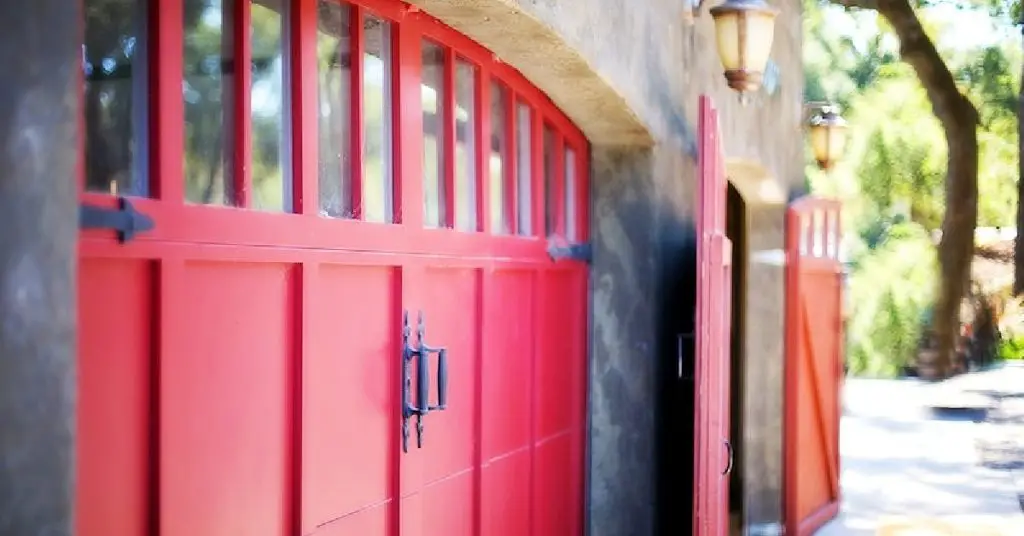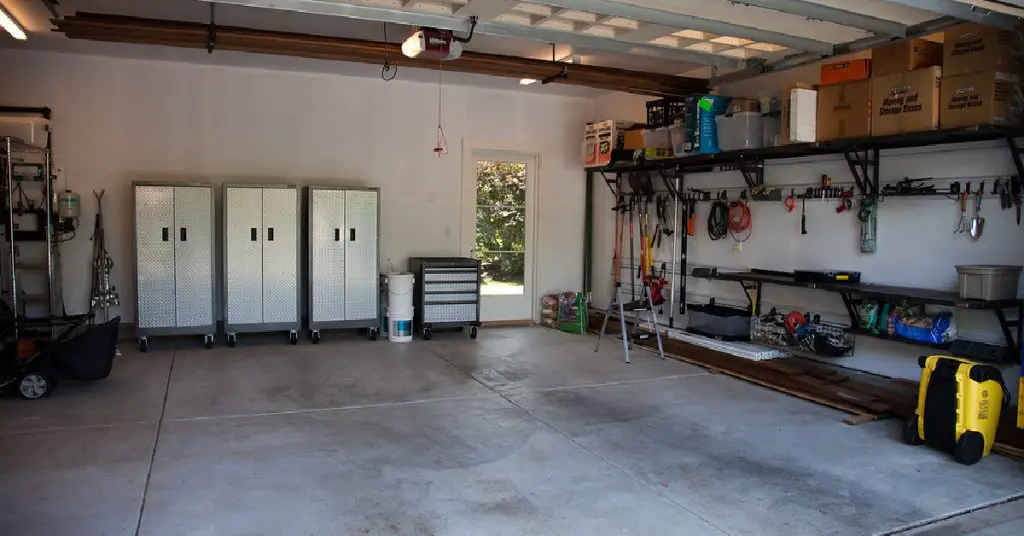When it comes to insulating your garage, the ceiling rafters play a crucial role in preventing heat loss, reducing energy consumption, and maintaining a comfortable temperature. Insulating your garage ceiling will not only make it more pleasant to work in but also protect your belongings and vehicles from extreme temperatures. In this comprehensive guide, we will explore various insulation options, discuss the benefits of insulating your garage ceiling rafters, and provide step-by-step instructions for how to insulate a garage ceiling rafters successfully.

Key Takeaways:
- Improves energy efficiency and reduces utility costs
- Enhances comfort and protects belongings from extreme temperatures
- Fiberglass, cellulose, rigid foam, and spray foam are common insulation options
- Proper ventilation and fire safety measures are essential
4 Benefits of Insulating Your Garage Ceiling Rafters
Proper insulation of your garage ceiling rafters offers several benefits. Here are some key advantages you can expect:
1. Improved Energy Efficiency
Insulating your garage ceiling rafters helps to minimize heat transfer between the garage and the outside environment. During hot summers, insulation prevents hot air from infiltrating the garage, keeping it cooler and reducing the need for excessive cooling. In colder months, insulation prevents heat loss from the garage, maintaining a warmer temperature and reducing the workload on your heating system.
2. Reduced Utility Costs
By improving energy efficiency, insulating your garage ceiling rafters can lead to significant savings on your utility bills. With less heat loss or gain, your heating and cooling systems won’t have to work as hard to maintain a comfortable temperature. This translates to lower energy consumption and reduced costs in the long run.
3. Enhanced Comfort and Usability
Insulating your garage ceiling rafters creates a more comfortable environment, making it easier to use the space year-round. Whether you’re using the garage as a workshop, storage area, or additional living space, proper insulation ensures that the temperature remains pleasant regardless of the weather outside.
4. Protection for Belongings and Vehicles
Insulation acts as a barrier against extreme temperatures, protecting your belongings and vehicles from potential damage. In colder climates, insulation prevents freezing temperatures from affecting sensitive items or causing damage to your car’s battery or fluids. In hotter climates, insulation helps to keep the garage cooler, preventing heat-related damage to stored items or vehicles.
4 Types of Insulation Materials
Before embarking on your garage ceiling insulation project, it’s important to understand the different types of insulation materials available. Each type has its own characteristics, advantages, and considerations. Here are four common options:
1. Cellulose Insulation
Cellulose insulation is made from recycled newspaper and treated with fire-retardant chemicals. It is typically blown into the ceiling cavity using a specialized blower machine. Cellulose insulation is an excellent choice for finished garages, as it provides effective thermal protection and soundproofing. However, it requires professional installation and may not be suitable for unfinished or exposed rafters.
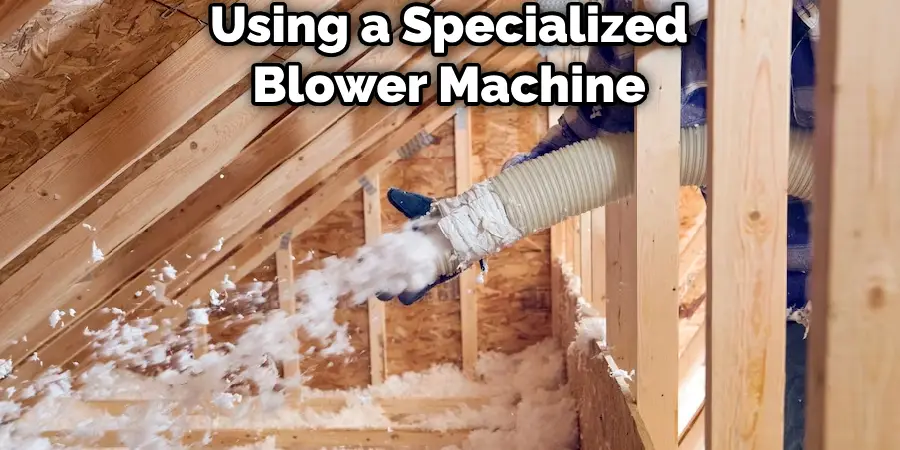
2. Fiberglass Insulation
Fiberglass insulation is one of the most popular and widely available options for garage ceiling insulation. It comes in pre-cut batts or rolls, making installation relatively straightforward. Fiberglass insulation is affordable, lightweight, and offers good thermal performance. However, it can cause skin irritation and requires careful handling. It is important to cover fiberglass insulation with drywall to protect against skin contact and prevent fiberglass particles from becoming airborne.
3. Rigid Foam Insulation
Rigid foam insulation is a versatile option that provides excellent thermal resistance. It comes in rigid panels, typically made of extruded polystyrene or expanded polystyrene. Rigid foam insulation is lightweight, moisture-resistant, and easy to cut and install. It can be attached directly to the ceiling rafters, creating a continuous insulating layer. However, rigid foam insulation is not fire-resistant and must be covered with a fire-rated material, such as drywall, for safety.
4. Spray Foam Insulation
Spray foam insulation offers excellent thermal performance and air-sealing properties. It is applied as a liquid that expands and hardens into a solid foam, filling gaps and creating an airtight barrier. Spray foam insulation provides superior insulation and prevents air leakage, making it an effective choice for garage ceilings. However, professional installation is recommended due to the specialized equipment and expertise required.
Preparing for the Insulation Project
Before you start insulating your garage ceiling rafters, proper preparation is essential. Follow these steps to ensure a smooth and successful insulation project:
Inspecting and Measuring the Garage Ceiling
Begin by inspecting your garage ceiling to identify any loose rafters, cracks, or structural issues. Check if the existing rafters are secure and free from damage. Measure the length and width of the ceiling rafters, noting down any variations or irregularities. This information will help you determine the amount of insulation material needed and plan accordingly.
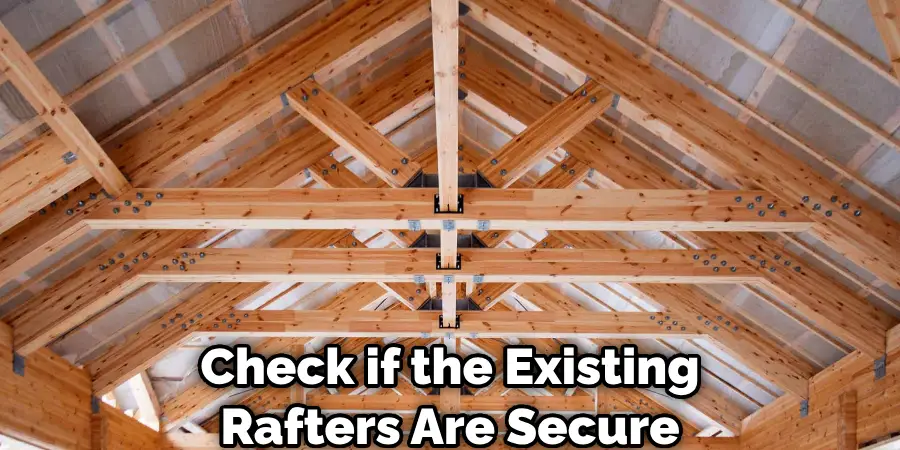
Cleaning the Work Area
Before installing insulation, it is important to clean the work area thoroughly. Remove any items, such as vehicles or storage, from the garage to create a clear and accessible space. Sweep or vacuum the ceiling area to remove dust, debris, and cobwebs. Cleaning the ceiling will ensure better adhesion of insulation materials and promote a more effective insulation barrier.
Sealing Gaps and Cracks
Inspect the ceiling for any gaps or cracks that could allow air infiltration. Use expanding foam sealant to fill these gaps, ensuring a tight seal. Be sure to follow the manufacturer’s instructions for proper application and allow the foam to fully cure before proceeding with insulation installation.
Installing Rafter Vents
Rafter vents, also known as insulation baffles, are essential for proper ventilation in your garage ceiling. These vents ensure the flow of air from the soffits to the roof vents, preventing moisture buildup and maintaining a healthy environment. Cut the rafter vents to fit between the rafters, placing them on both sides of the garage. Attach the vents securely using a staple gun or similar fasteners.
Choosing the Right Insulation Material
When selecting insulation material for your garage ceiling rafters, consider factors such as your budget, desired R-value (thermal resistance), moisture resistance, and fire safety requirements. Each insulation type has its own advantages and considerations, so choose the one that best suits your needs and preferences. Consult with a local insulation professional or building supply store for specific recommendations based on your climate and garage conditions.
3 Easy Steps for How to Insulate a Garage Ceiling Rafters
Now that you have prepared the work area and chosen the insulation material, it’s time to start insulating your garage ceiling rafters. Follow these step-by-step instructions to ensure a successful installation:
Step 1: Cutting the Insulation
Measure the distance between the ceiling rafters and cut the insulation material to fit. Use a sharp utility knife or insulation cutting tool to make clean, precise cuts. It’s important to leave a small gap at the top and bottom of each insulation piece to allow for air circulation and prevent compression.
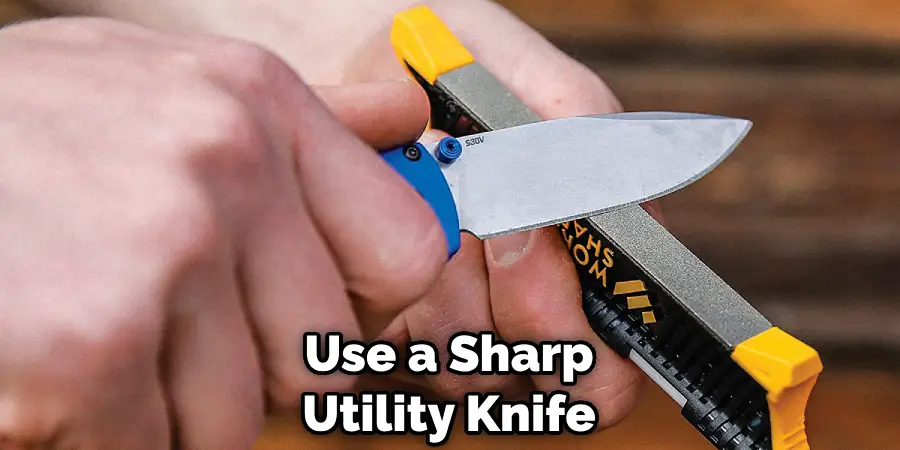
Step 2: Installing the Insulation
Start by installing the insulation in the perimeter rafters, working your way toward the center of the ceiling. Ensure that the facing side of the insulation is facing down, towards the interior of the garage. Press the insulation firmly between the rafters, taking care not to compress or overstuff it. For fiberglass batts, gently push the insulation into place, ensuring a snug fit. For rigid foam insulation, attach it securely to the rafters using adhesive or mechanical fasteners, following the manufacturer’s instructions.
Step 3: Ensuring Proper Alignment and Coverage
As you install each insulation piece, ensure that it aligns properly with the ceiling rafters and covers the entire surface area. Insulation should fit snugly and create a continuous thermal barrier across the ceiling. Pay attention to corners, edges, and hard-to-reach areas to ensure complete coverage. Take extra care when working around electrical boxes, leaving ample space for safe wiring connections.
You Can Check It Out to Keep Dogs Warm in Garage.
3 Additional Tips and Considerations
While insulating your garage ceiling rafters, keep the following tips and considerations in mind to ensure a successful and effective insulation project:
1. Dealing with Obstacles and Electrical Boxes
If you encounter obstacles such as electrical boxes or other fixtures in the ceiling, carefully work around them. Cut the insulation to fit around the obstacle, leaving sufficient space for proper installation and safe operation. Avoid compressing or covering electrical boxes to maintain accessibility and prevent potential fire hazards.
2. Ensuring Proper Ventilation
Proper ventilation is crucial for maintaining a healthy and moisture-free garage environment. Ensure that the rafter vents are properly installed and provide unobstructed airflow from the soffits to the roof vents. This will prevent condensation, mold growth, and other moisture-related issues. Consult with a ventilation specialist or building professional if you have any concerns about the ventilation requirements for your specific garage.
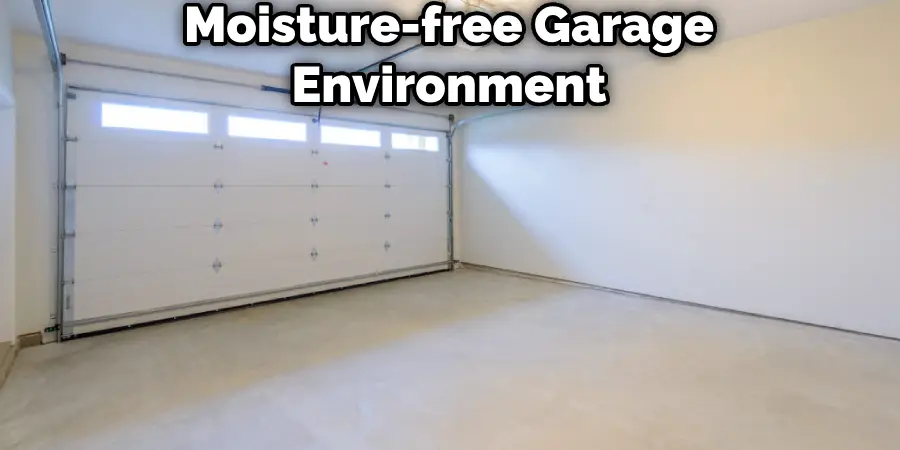
3. Considering Fire Protection Measures
Fire safety is an important consideration when insulating your garage ceiling. If you choose insulation materials that are not fire-resistant, such as rigid foam insulation, it is necessary to cover them with a fire-rated material, such as drywall. This provides an additional layer of protection and ensures compliance with local building codes and regulations. Consult with a fire safety expert or building inspector to determine the specific fire protection requirements for your garage.
4 Common Mistakes to Avoid
To ensure a successful insulation project, be aware of common mistakes and pitfalls. Avoid the following errors to achieve the best results:
- Neglecting safety precautions: Always wear appropriate personal protective equipment, such as gloves, dust masks, and eye protection, when handling insulation materials. Follow the manufacturer’s instructions and safety guidelines to minimize the risk of injury or health hazards.
- Insufficient insulation coverage: Ensure that the entire garage ceiling area is properly insulated, leaving no gaps or areas of inadequate coverage. This will maximize energy efficiency and provide optimal thermal performance.
- Poor ventilation: Proper ventilation is crucial for maintaining a healthy garage environment. Ensure that rafter vents are installed correctly and that air can flow freely between the soffits and roof vents. Inadequate ventilation can lead to moisture buildup, mold growth, and other issues.
- Ignoring fire safety requirements: If using insulation materials that are not inherently fire-resistant, such as rigid foam insulation, ensure compliance with fire safety regulations. Cover the insulation with a fire-rated material, such as drywall, to provide necessary fire protection.
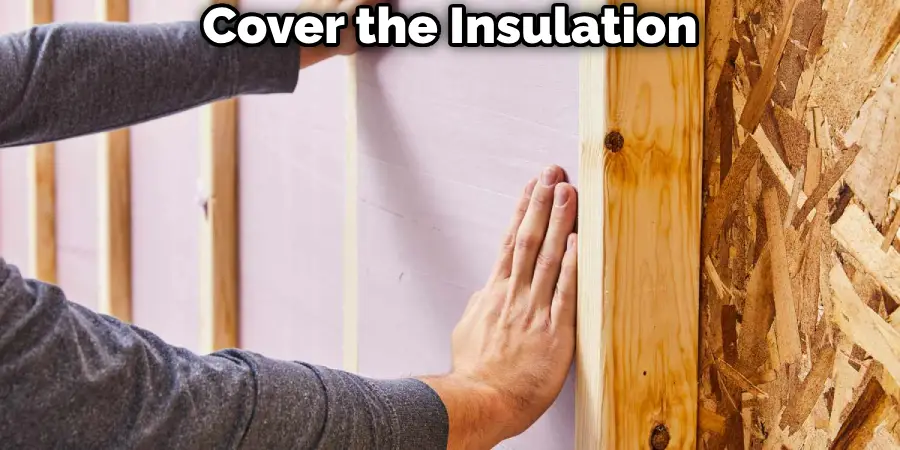
FAQs About How to Insulate a Garage Ceiling Rafters
What is the Best Insulation for Garage Rafters?
The best insulation for garage rafters depends on your specific needs. Fiberglass is the most commonly used insulation in garages and homes, as it is affordable and easy to install. However, cellulose insulation may be the cheapest and best option for garage rafters. Cellulose insulation is made from recycled paper and treated to be fire-resistant. It can be blown into the rafters, providing excellent coverage and thermal performance. Before insulating, make sure to check the area for any damaged or loose rafters or fasteners. Consider your budget, installation method, and desired thermal performance when choosing the best insulation for your garage rafters.
What is the Best Way to Insulate an Exposed Garage Ceiling?
The most commonly used insulation for garage rafters is fiberglass, which provides effective thermal insulation. However, for a more cost-effective option, cellulose insulation can be considered. When insulating an exposed garage ceiling, both fiberglass and cellulose insulation are viable choices. Fiberglass insulation is affordable and easy to install, while cellulose insulation is cheaper and offers similar thermal performance. It is important to assess any damaged or loose rafters before insulating and consider factors such as budget, installation method, and desired thermal performance when choosing insulation for the garage ceiling.
Can You Insulate Ceiling Rafters?
Yes, it is possible to insulate ceiling rafters in a garage. The most commonly used insulation options for garage rafters are fiberglass and cellulose insulation. Both options are viable choices for insulating an exposed garage ceiling. However, when choosing insulation for the garage ceiling, it is important to consider factors such as budget, installation method, and desired thermal performance. Fiberglass insulation is a popular choice, but cellulose insulation is a more cost-effective option. Additionally, cellulose insulation is considered to be more environmentally friendly than fiberglass
Should I Insulate Garage Ceiling or Roof?
If there’s a living space above the garage, insulate the ceiling. If you use the garage frequently, insulate both the roof and walls. If it’s just for parking, roof insulation may not be necessary. Generally, insulating the ceiling is easier and more beneficial. However, if there’s an attached attic, insulating the roof is best.
Conclusion
Insulating your garage ceiling rafters is a worthwhile investment that offers numerous benefits, including improved energy efficiency, reduced utility costs, enhanced comfort, and protection for your belongings and vehicles. By choosing the right insulation material, following proper installation techniques, and considering important factors like ventilation and fire safety, you can create a well-insulated and functional garage space. Whether you plan to use your garage for work, storage, or leisure activities, proper insulation will ensure a comfortable and enjoyable environment year-round. Follow the recommendations and guidelines provided in this comprehensive guide, and you’ll be well on your way to achieving an efficiently insulated garage ceiling.

